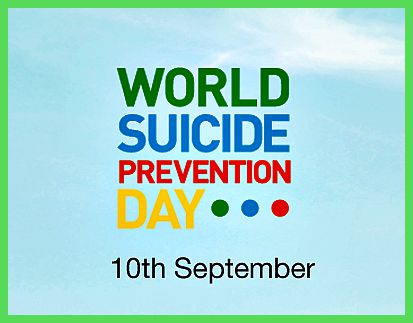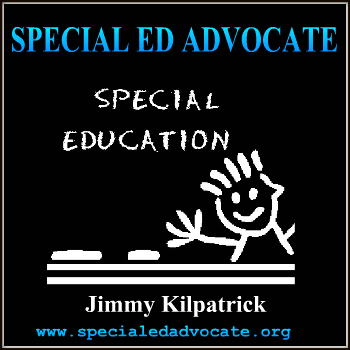 Michael F . Shaughnessy –
Michael F . Shaughnessy –
1) Bob, a few years back, you did a book entitled “Creating Classrooms Where Teachers Love to Teach”. How has that book been received?
Creating Classrooms has continued to sell better every year. It is a simple book in some ways. It tells the story of a teacher who is struggling to manage behavior both at home and in the classroom. Another teacher reaches out to her and helps her master the skills of Love and Logic, and she learn to set limits with empathy and respect. The story line and the teaching of skills are woven together to help teachers understand and remember the skills that make teaching and learning more fun and effective.
2) Bob, I continually hear from teachers that “I love to teach- it’s the meetings and paperwork that drive me crazy”. Your suggestions?
We’ve lost focus in many of our schools. My own observation is that many great teachers are asked to teach within poorly designed and failing systems. Here are some thoughts.
1. Cover less content. Really! The most successful school programs in the world use a narrower instructional focus, covering less content but to a deeper level of understanding and application. Learning is not a race.
2. Create simple systems of accountability which use formative assessment to keep track of essential outcomes and allow teacher to quickly respond to the specific needs of students. Especially in the early years of school, racing through content usually causes many students to develop significant gaps in the understanding of essential skills and concepts.
3. Take the time to build classroom cultures where kids feel safe and connected, and in which they learn appropriate school behaviors.
4. Take the time to build relationships with students.
5. Help students learn to fall in love with reading, math, and learning.
Somehow we’ve come to believe that “rigor” means racing through more content, often with students who are disengaged and frustrated. It’s not working. Let’s create smarter systems.
3) Now, we have the “Common Core” going to be implemented soon- in your mind, will the Common Core help or hinder teachers in their work?
The Common Core offers us an opportunity to improve our systems. The CCSS is a decent framework for instruction which is much narrower than the sets of Grade Level Content Expectations which are used in each of the states. It could be used as a framework for a viable curriculum, which means a curriculum we actually have time to cover.
A truly effective curriculum could be “covered” in about half the available instructional time, allowing plenty of time for re-teaching, practice time, extended learning, projects and activities. We could make learning fun again.
4) How do you develop “a caring culture” and how do you address bullying?
In a caring classroom culture, the teacher establishes clear classroom procedures, and then ensures that students practice these procedures until every single student knows how to use school behaviors that lead to success. The teacher takes the time to build relationships with kids, and help them build relationships with each other. A standard for how the teacher treats students is clearly established, and kids develop clear expectations for how they treat others and expect to be treated.
In a great classroom culture, the teacher has skills which help him/her set clear limits without anger. He/she knows how to use respectful speech, neutralize arguing, sometimes delay consequences, offer choices, nip misbehavior in the bud, use empathy, develop empathy among students, and help kids solve their own problems.
As for bullying, there is really only one solution. More laws, more rules, and more angry adults will not stop bullying. It is time to teach children how to build an understanding of how we will treat others and expect to be treated, and then stand up and speak up when someone violates these expectations. No more bystanders.
Some may say we don’t have time to teach behavior or help children develop character. But not taking the time leads to chaotic classrooms and social behaviors that will diminish the social and economic future of our children.
The Juice Box Bully is my book for elementary children, and shows kids how to stand up for each other.
5) Back in 2001, you did a book on preventing early learning failure- what were some of the top issues that you addressed there?
Preventing Early Learning Failure explored the importance of helping children become proficient learners during the early childhood hears (birth through third grade), and looked at the insanity of waiting until children had a significant learning discrepancy before offering instructional supports. These two ideas are fairly well accepted now, but most school systems continue to do too little and too late.
By narrowing the instructional focus in the early grades, implementing quality formative assessment systems which lead to responsive instruction, offering high-quality preschools, developing effective parent training models, and training teachers to develop great classroom cultures, we can improve learning outcomes, reduce the need for special education, and help many more kids become learners for life.
6) What is the connection between preventing early learning failure and creating classrooms where teachers look forward to teaching?
Children learn better in classrooms where they know how to behave, and where they feel safe and connected. They also learn better when teachers deliver instruction at the level of student readiness, which means that kids learn best when there is a little bit of challenge but not too much. If we offer instruction too fast, too frustrating, kids quickly disengage and many begin to disrupt classroom instruction.
Simply put, good instruction reduces behavior problems, and good classroom culture helps children focus and learn. Well-designed instruction at the level of student readiness and quality classroom culture are both essential to good learning outcomes. When kids are learning and behaviors are positive, teachers love to come to work.
7) How do we help teachers know their students’ strengths and weaknesses, and respond by giving them the instruction and support they need?
For the last several years I’ve helped teachers learn to use the Essential Skill Inventories (K-3), which is a system of formative assessment which tracks crucial skills at each grade level. The skills include basics like letter recognition and letter sounds in Kindergarten and First Grade, phonologic skills, literacy, numeracy, behavior and social skills, basic motor skills, visualization and visual memory, and oral language. The inventories are a framework for assessment, and are to be used within any high quality viable curriculum.
These are the 30 to 33 skills in any grade level which need more than “coverage”. These skills need to be developed to a deep level of understanding, and proficiency is noted only after the student can perform the skill well on several different days and with different learning materials or contexts.
When teachers keep track of the development of these essential skills, they get to know their student well, and can plan instruction that meets each student’s needs. It’s incredible to watch. Our goal is to help more than 90% of students become fully proficient in every skill by the end of the year.
8) What is the role of the parent in creating these great classrooms where teachers love to teach?
Some parents have relinquished the role of being the primary teacher for their children, and tried to hand this role over to the schools. It’s not a good idea. Creating a home in which children have regular routines, clear limits, lots of nurturing, lots of play, and lots of learning with books and numbers is essential to building the foundation for a life of learning. But sometimes parents do not have the skills or the support network to know how to optimally support their children’s early learning success.
I envision a day when schools will be centers for parent learning, building trust and connection with parents and offering high quality learning opportunities and networking with other parents. Models like Parents as Teachers, Harlem Children’s Zone, Chicago Parent-Teacher Centers, and Starfish Family Services have recognized this need and are leading the way.
9) What have I neglected to ask about your early work?
My early work developing an early learning success initiative was primarily focused on reducing the need for children to be placed in special education. The wait to fail model is such a waste of money and human potential. In my district we managed to reduce the need for special education placement to 5.38%, not by making it difficult to meet criteria for placement but by supporting teachers and students in the early grades before the learning difficulties became life-long conditions.
What I did not realize back in the mid 1990s was that so many children were being damaged by our race to cover curriculum, and that a quality early learning initiative would be designed to help every child get a better learning opportunity during these crucial early years. Simply put, we are failing two-thirds of our American children.
By the beginning of fourth grade, the point at which we can accurately predict long-term learning outcomes, only 33% of American children are at proficient reading levels (Annie E. Casey Foundation, 2010). Only 17% of children who are eligible for free or reduced lunch are at proficient reading levels. The vast majority of these children are unlikely to become good readers, love to learn, go on to advanced education, or become learners for life. We have institutionalized a pattern of failure which will keep poor children unsuccessful in the information age.





















